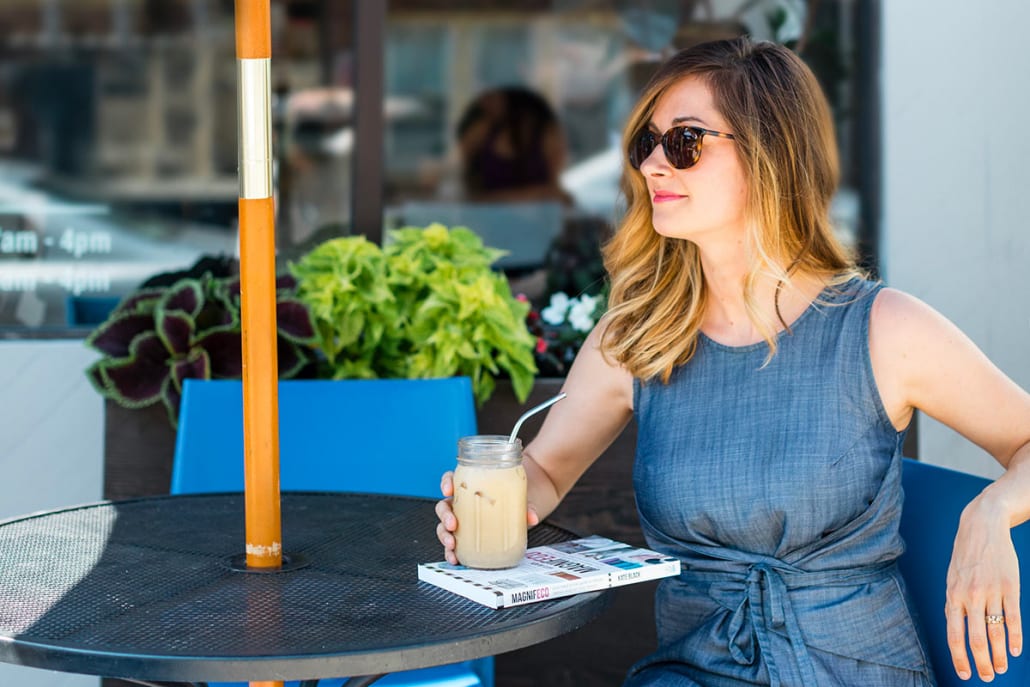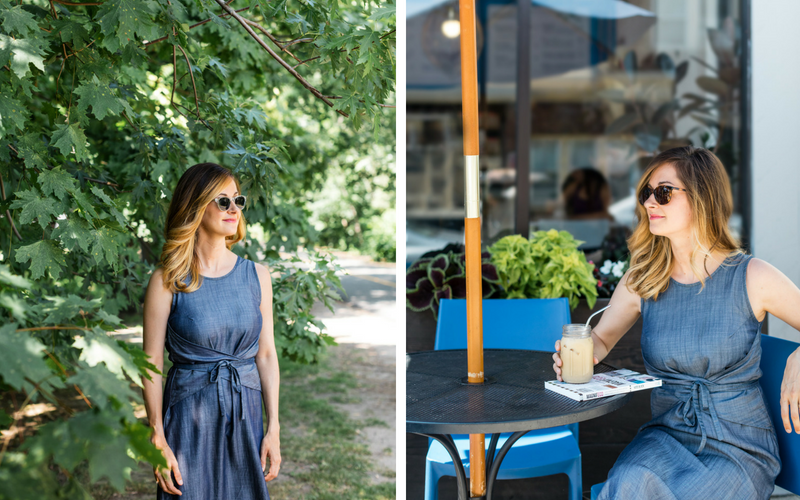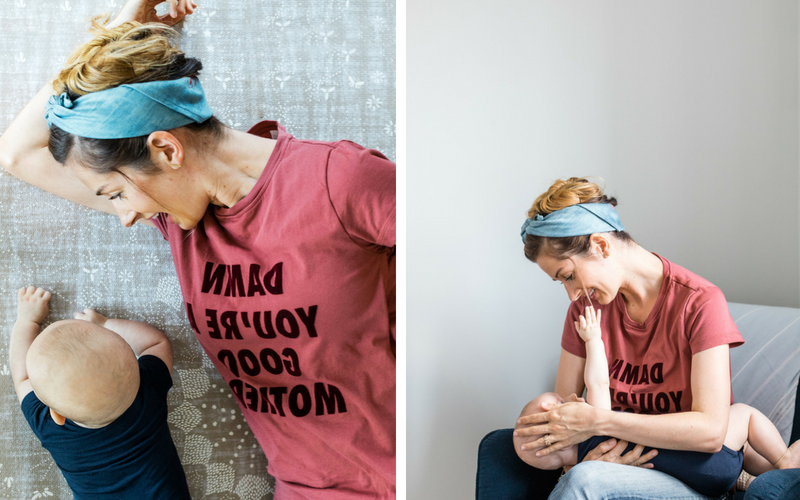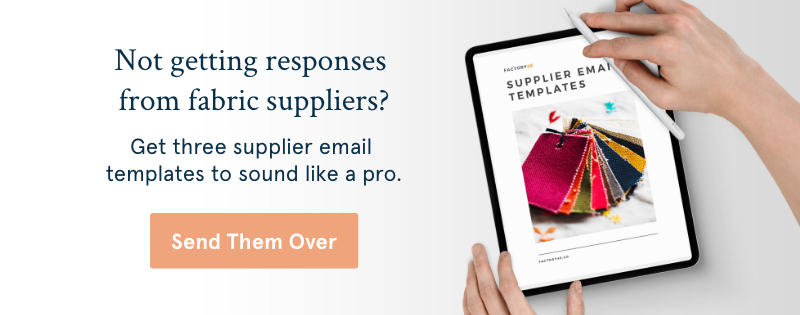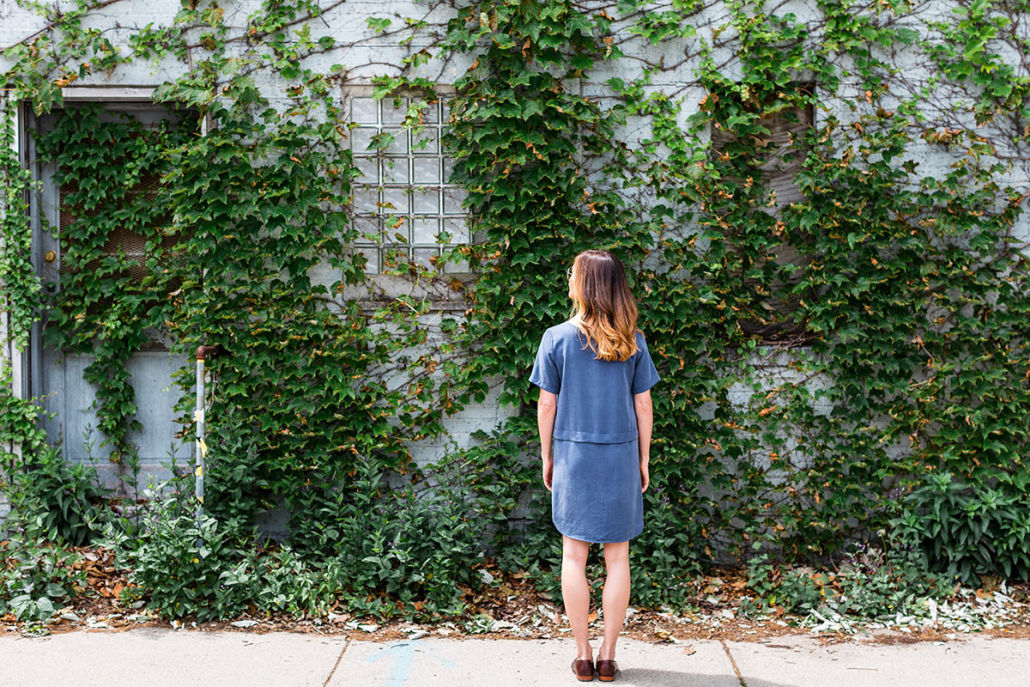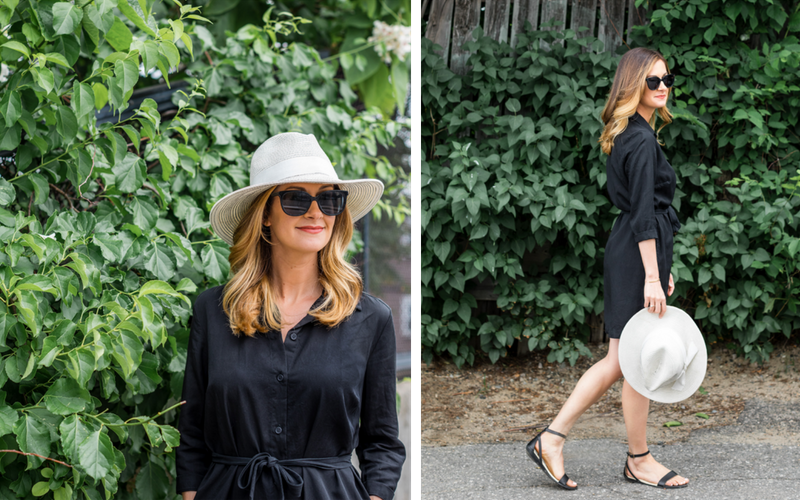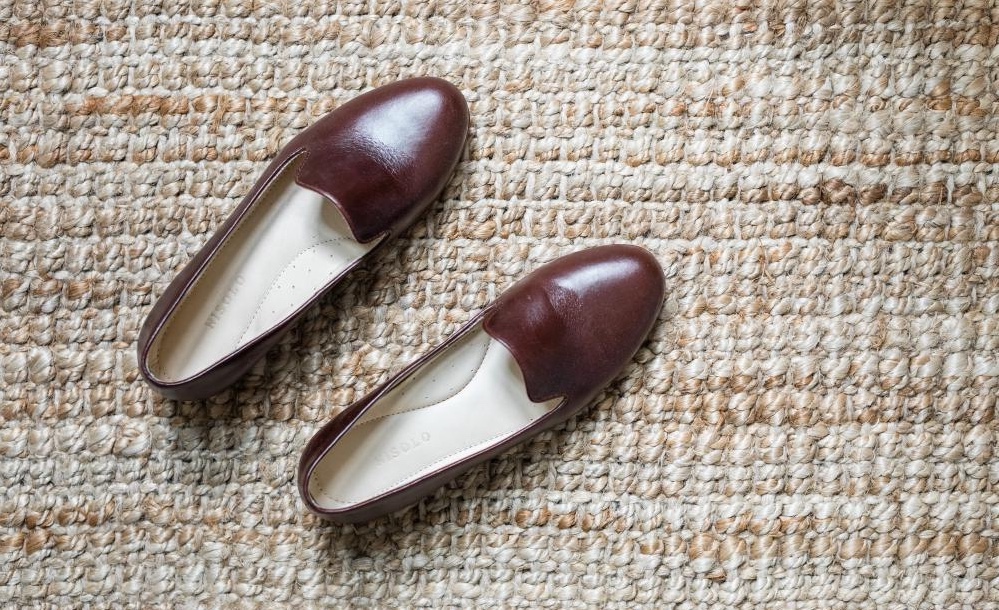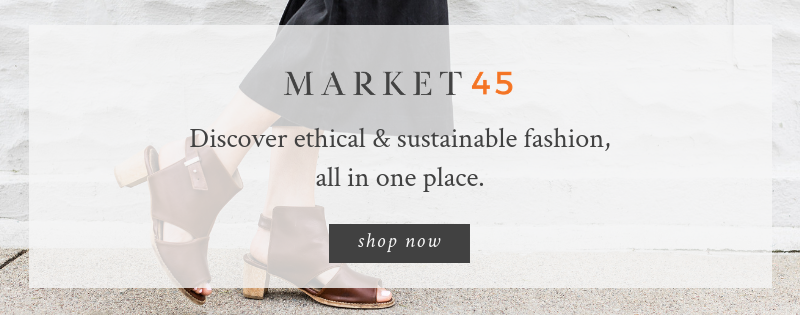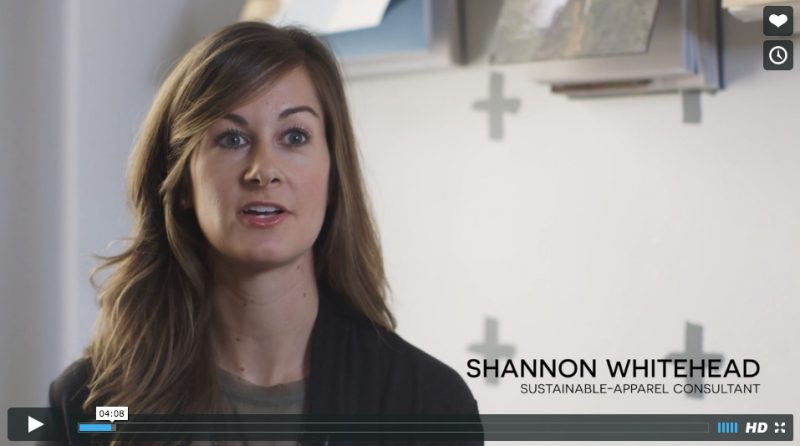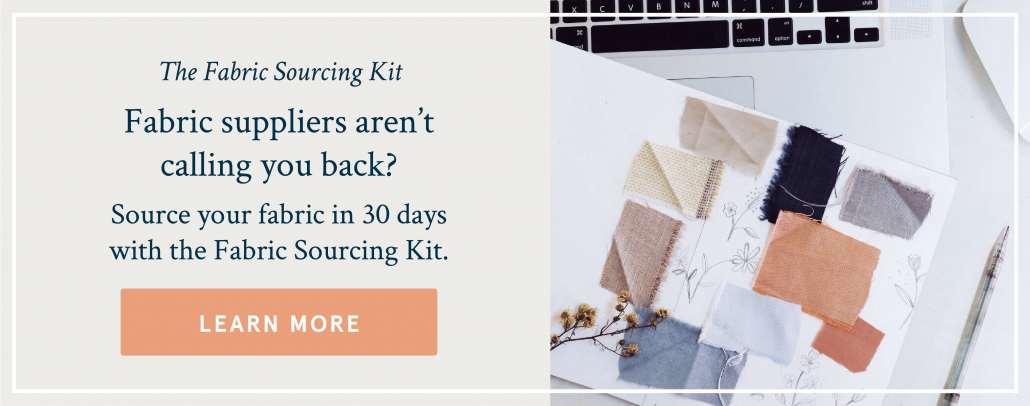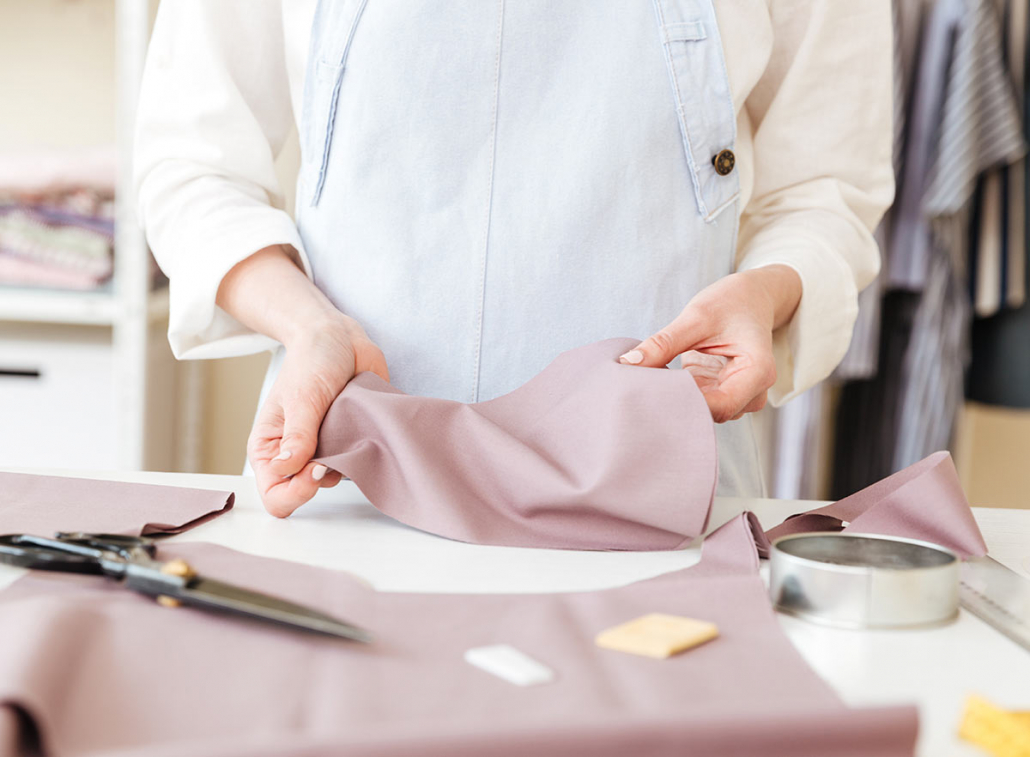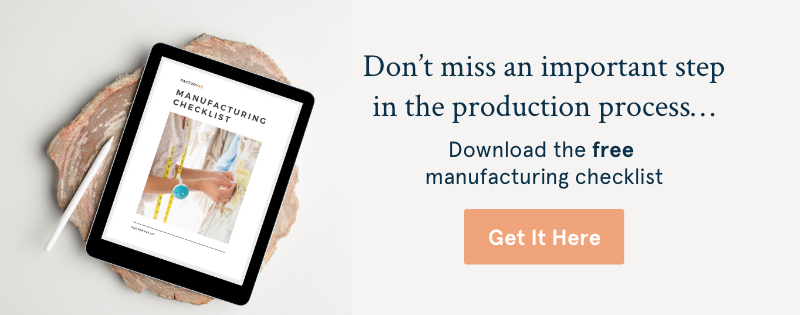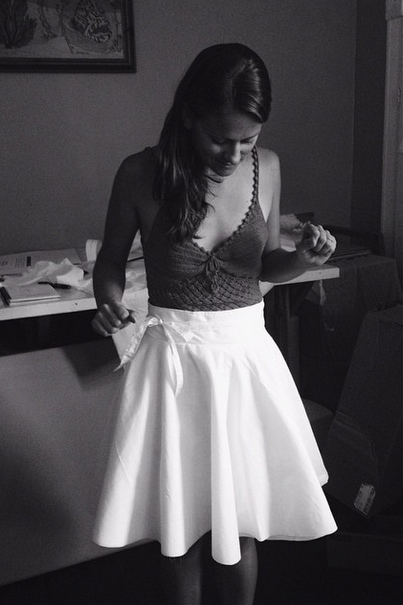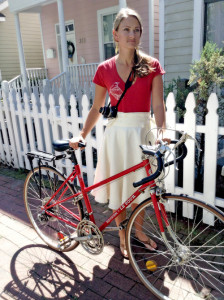I mentioned last month that I’ll be featuring a series of sustainable fashion brands and products here and on Instagram.
This is all in an effort to help integrate more ethical and sustainable fashion into the multi-million dollar Instagram scene where, for the most part, fashion bloggers and “influencers” are touting fast fashion and cheap deals.
But it’s also in preparation for the upcoming launch of the newest Factory45 project:
Market45, an ethical fashion marketplace.
Featuring 20 invite-only brands that have launched through the Factory45 program, this online marketplace will be an easier way to shop sustainable and ethical fashion all in one place.
If you’d like to request early access for holiday shopping 2018, click here.
And then keep reading for August’s featured sustainable fashion products below:
VESTA STUDIO | HALF MOON WRAP DRESS
In 2017 Factory45’er Kendall Wilson launched Vesta Studio, a collection of 100% vegan womenswear.
Born out of a love of high quality, luxurious textiles — that are also cruelty-free and eco-friendly — Vesta Studio is inspired by the philosophy of “buying less, but better.”
Each piece is made one at a time to reduce waste, lessen sitting inventory and to offer an affordable price point to customers.
Vesta boasts “versatile clothing for a life of simple beauty,” and the Half Moon Wrap Dress has been exactly that for me.
I wore this dress when I was seven months pregnant, and I’ve continued wearing it in the months after giving birth. It’s incredibly comfortable, very flattering (if I do say so myself), and I absolutely love the drape, texture and color of the fabric.
You can shop the Half Moon Wrap Dress, as well as pre-orders for the new collection here.
BOOB DESIGN | ‘CHARI-TEE’ MOTHER
I was first introduced to BOOB Design when my web designer gifted me with one of their maternity shirts for my birthday last year.
The Scandinavian company puts sustainability at the forefront of their business model, and I ended up purchasing several other maternity garments throughout the course of my pregnancy.
The thing that sets BOOB above and beyond other maternity wear (besides their fabrics and manufacturing) is that almost all of their garments convert into nursing wear.
So when BOOB reached out to ask if I’d be apart of their “Chari-Tee” campaign I jumped at the chance.
For every one of these tops sold, they donate 5 percent of proceeds to Every Mother Counts, a non-profit dedicated to making pregnancy and childbirth safe for every mother, everywhere.
You can shop the ‘Chari-Tee’ and other sustainable maternity and nursing wear here.
GOOD ON YOU | ETHICAL SHOPPING APP
So, this isn’t a sustainable fashion product you can wear but it’s an amazing product you can use the next time you ask yourself: “How do I know if a brand is ethical?”
Good On You is an ethical shopping app that rates over 2,000 brands so that you know exactly where they stand in ethics and sustainability.
The app uses a five-star rating system to assess the sourcing practices of each retailer or brand using the following labels: “We Avoid,” “Not Good Enough,” “It’s a Start,” “Good” and “Great.”
If you’re just starting out in your ethical fashion journey, this is a great tool to keep in the palm of your hand.
You can download the Good On You app and install the desktop plug-in here.
To see the rest of August’s featured products, come on over to Instagram by clicking here.

